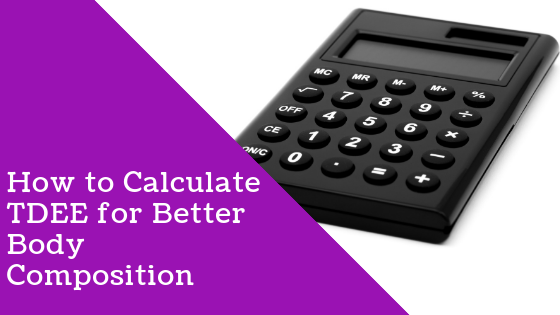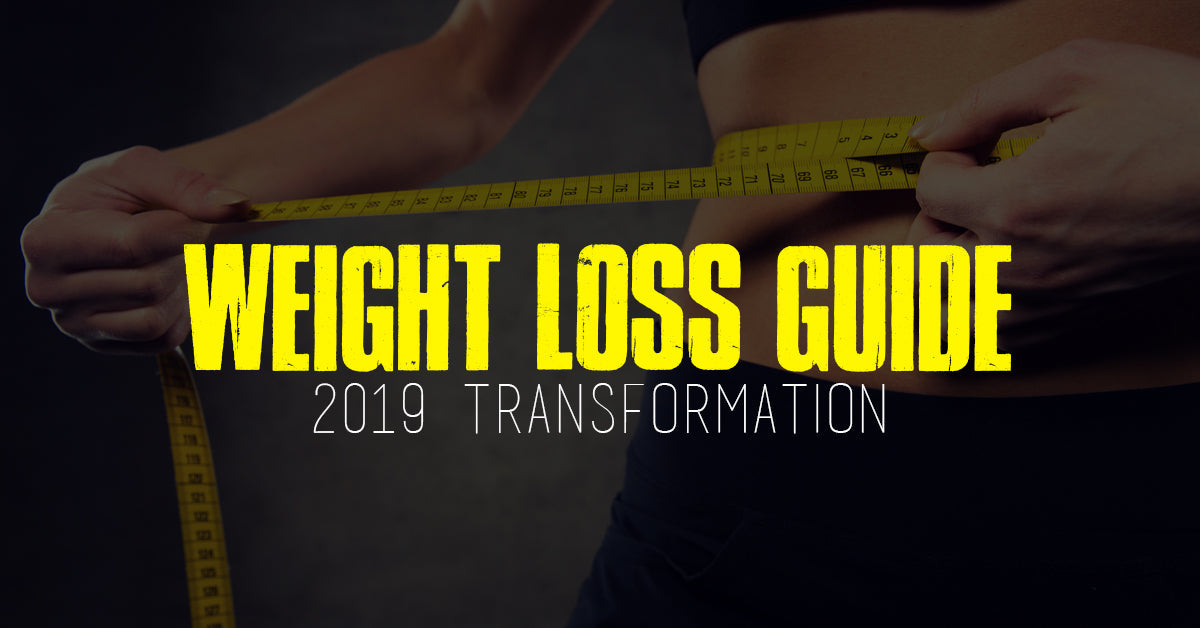If you want to know how to calculate how many calories you need to burn fat, build muscle, or maintain your current physique, then you want to read this article.
On a mission to build some serious muscle mass? Embarking on a long overdue fat loss journey? Attempting a recomp to get lean and add size simultaneously?
Then pay attention, because we’re about to give you the secret to success no matter what your goals are!
No matter what your goals are (fat loss, muscle gain, better performance, etc), it all comes down to your diet. You can do all the training you want to, but if your nutrition habits aren’t aligned with your goals, you’ll never achieve the results you’re truly seeking.
That’s why it’s absolutely crucial you know what your TDEE is and how to put it to work for you!
What is TDEE?
TDEE stands for Total Daily Energy Expenditure. It is the total sum of calories you burn in a given day comprised of four key factors:
-
Basal Metabolic Rate (BMR)
The number of calories your body each day just to keep you alive, with zero physical activity. Think of this as your “survival” level of calories. -
Thermic Effect of Food (TEF)
The number of calories your body expends processing all of the foods you eat in a given day. -
Non-Exercise Activity Thermogenesis (NEAT)
The number of calories burned during the day, not including exercise. This constitutes actions like walking to the kitchen, tapping your foot, doing the laundry, etc. -
Thermic Effect of Activity (TEA)
The number of calories burned from exercise (activity performed with greater energy output than normal daily tasks). This includes all manner of weightlifting, cardio, HIIT, sprints, etc.
So, simplifying things a bit:
TDEE = BMR + TEF + NEAT + TEA
Add those together and you have the required number of calories you need on a daily basis to MAINTAIN your weight!
Calculating TDEE
Thanks to the advances of modern technology, you no longer have to pull out a piece of paper, pencil, and trusty calculator to compute your TDEE. But, just for the fun of it, here is how you would go about calculating your BMR:
-
Women BMR = 655 + (9.6 X weight in kg) + (1.8 x height in cm) – (4.7 x age in yrs)
-
Men BMR = 66 + (13.7 X weight in kg) + (5 x height in cm) – (6.8 x age in yrs)
As an example, let’s take a 35 year old male, 6 feet tall, 180 lbs.
Age: 35
Height: 6’0” = 182.88cm
Weight: 180 lbs = 81.65kg
Plugging these number into the BMR equation gives:
BMR = 66 + (13.7 x 81.65) + (5 x 182.88) - (6.8 x 35)
BMR = 66 + 1118.61 + 914.4 - 238
BMR = 1861.01
This is the absolute minimum number of calories you body would burn if you simply laid in bed all day long.
Now, to calculate your TDEE, you must then take your BMR and multiply it by an “activity factor” which are numbers based off empirical data to help estimate how many calories you burn in a given day taking all of your non-BMR numbers into account. Here are the tried and true Katch-McArdle multipliers:
-
Sedentary (little to no exercise & work a desk job) = 1.2
-
Lightly Active (light exercise 1-3 days / week) = 1.375
-
Moderately Active (moderate exercise 3-5 days / week) = 1.55
-
Very Active (heavy exercise 6-7 days / week) = 1.725
-
Extremely Active (very heavy exercise, hard labor job, training 2x / day) = 1.9
Going back to our previous example, let’s assume our 35 year old male trains 4 days per week following an upper / lower split with no other cardio or HIIT training during the week. That classifies him as “Moderately Active”. To calculate his approximate TDEE, we multiply 1.55 times his BMR, which is:
TDEE = 1.55 x BMR
TDEE = 1.55 x 1861.01
TDEE = 2884.57
So, our example guy would need to consume roughly 2880 just to maintain his current weight. However, if you’re looking to alter your body composition (i.e. gain muscle, lose fat) you need to alter your intake to accomplish your goals.
Putting TDEE to Work!
How do we put TDEE to work for us in pursuing our fitness goals?
Simple. If you’re wanting to lose fat, you need to eat less than your TDEE. This forces your body to pull from its fat stores to compensate for the calories you’re not ingesting each day. But, if you’re looking to gain muscle mass, you need to eat ABOVE your TDEE.
Fat Loss
Now, we generally recommend that if you’re pursuing fat loss, to employ a 20% deficit. In our example male, this would work out to:
20% of TDEE = 0.20 x 2880 = 576
Calorie intake for weight loss: 2800 - 576 = 2,304
Once you have this number, you’ll then set your macros, which we recommend setting at:
Protein 0.8 - 1 per pound of bodyweight
Fat: 0.3 - 0.4 grams per pound of bodyweight
Carbs: The remaining number of calories you have left.
Going back to the example male eating at a 20% deficit, his daily macros would be:
-
Protein: 1g / lb x 180 lbs = 180g (Calories = 180g x 4 calories / g of protein = 720)
-
Fat: 0.4g / lb x 180 lbs = 72g (Calories = 72g x 9 calories / g of fat = 648)
-
Carbs are determined by subtracting out protein and fat macros from your daily calorie allotment then dividing by 4 to get the number of carbs you eat per day
Carb Calories = 2,304 - 720 - 648
Carb Calories = 936
Now divide 936 by 4 to get your total grams of carbs for the day:
936 / 4 = 234g Carbohydrates
In order for our 180 lb male to eat at a 20% deficit and still fulfill his nutritional requirements so as not to lose muscle while dieting, he would need to eat the following macro breakdown on a daily basis:
Protein: 180g
Fats: 72g
Carbs: 234g
Eating at this deficit should result in losing 1-2 lbs per week. If you are not losing at least 0.5 lbs per week, consider subtracting another 100 calories from your allotment and calculating your macros. If your are losing more than 2 lbs per week, add 100 calories back into your diet. Losing too much weight too fast can lead to muscle loss...exactly what you DON’T want when dieting!
Muscle Gain
If you’re wanting to add some size to your frame, you need to consistently eat above your TDEE. To minimize fat gain while trying to bulk up, you only need to employ a moderate caloric surplus.
Once you’ve calculated your TDEE, add an additional 200-300 calories to your caloric intake and calculate your macros using the information outlined above. If you find you’re not gaining at least 0.5 lb / week, add another 100 calories to your intake each day. If you’re gaining over 1 lb per week, dial back your intake by 150-200 calories. Gaining too much weight too fast increases your chances of adding unnecessary fat, which just means you’ll have to spend longer cutting down the line.
Takeaway
As we’ve stated several times throughout this piece, TDEE calculators are an estimate or approximation. That means they give you a rough idea of how many calories you’re burning each day. Some people have faster metabolisms than others, and might be burning more calories each day than the calculator says. This is why it’s imperative for you to track your macros and weight diligently.
If you’re trying to gain weight and already eating 200-300 calories over your TDEE, but not seeing the scale number go up, you’re probably one of the lucky few blessed with a fast metabolism. So, you’ll probably need to eat 400-500 calories over your TDEE to actually start building muscle.
All TDEE calculators are helpful for getting a general idea of what your daily nutritional requirements are, and can be extremely useful in getting a proper mass-gaining or fat loss diet set up. Once you’ve got a grasp on the estimated amount of calories you need per day, you can start to fine tune your required calorie intake based off changes in your weight and tape measurements.














Leave a comment
This site is protected by hCaptcha and the hCaptcha Privacy Policy and Terms of Service apply.